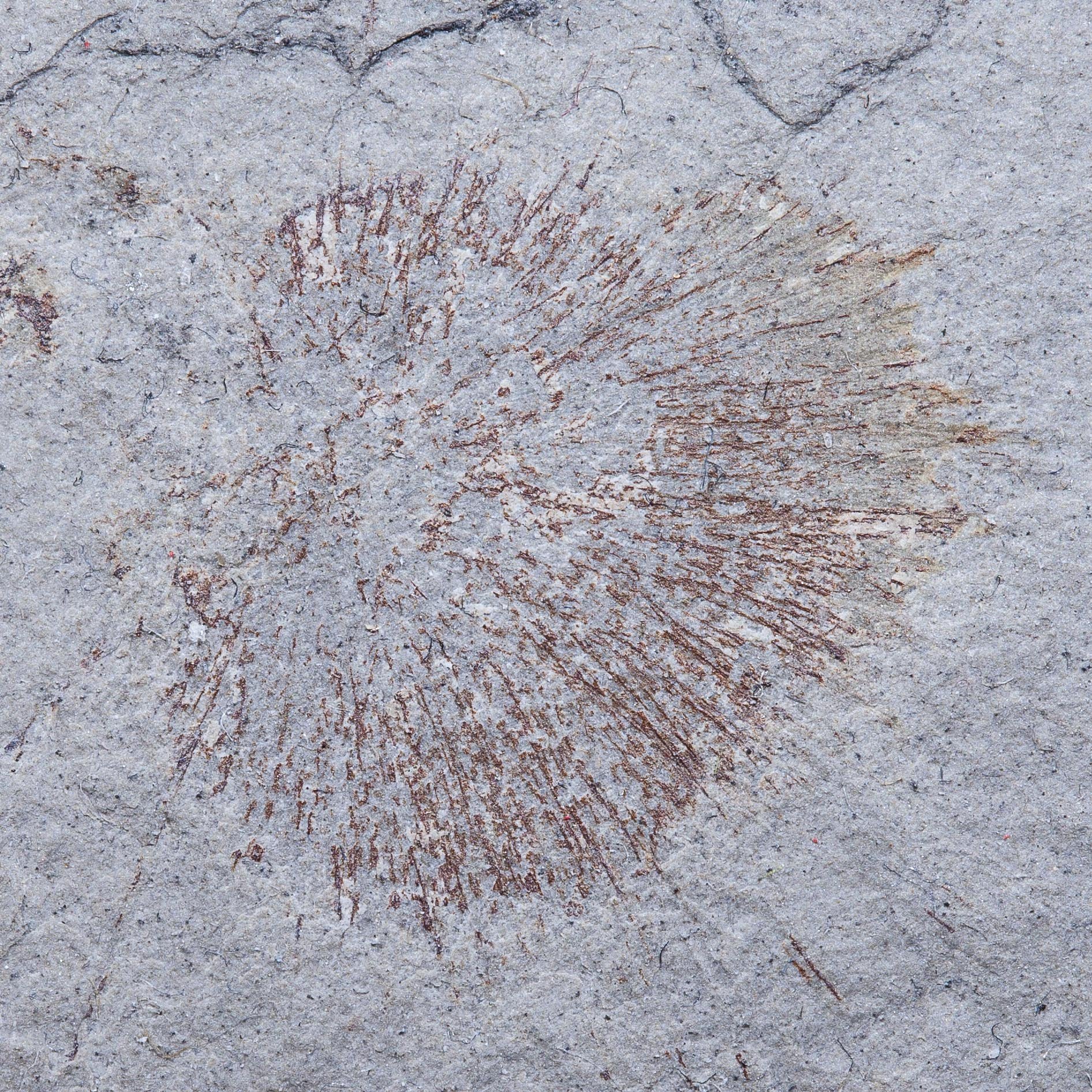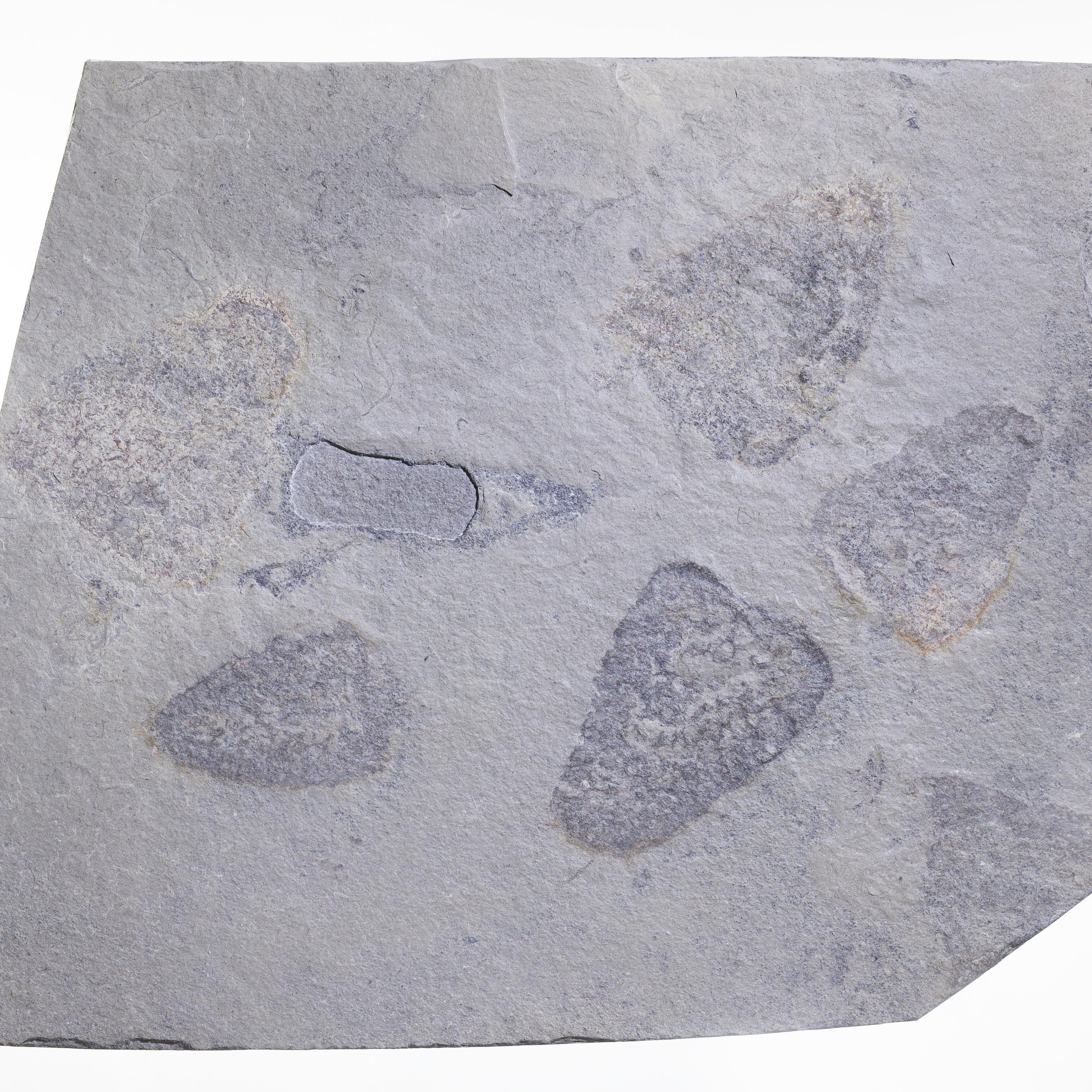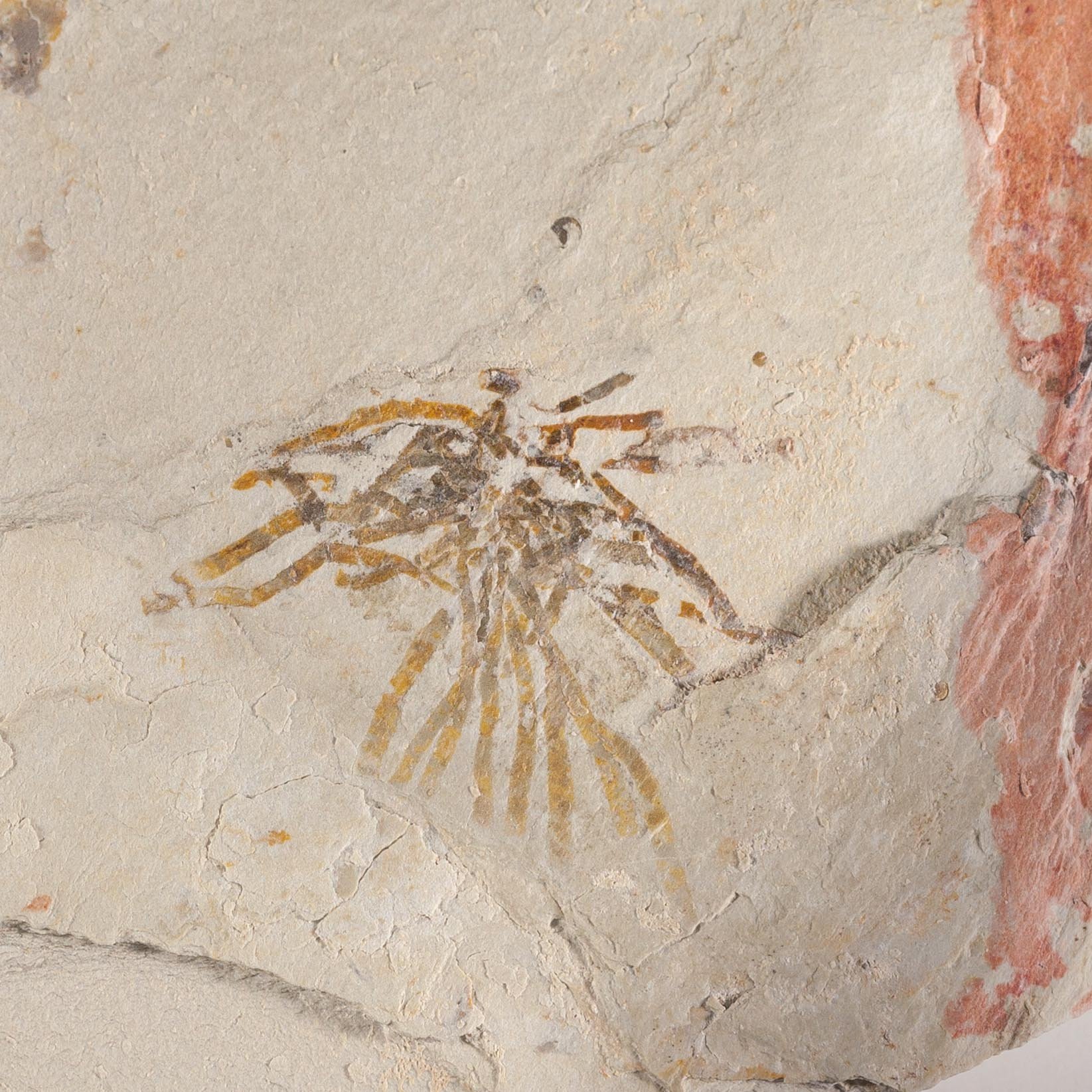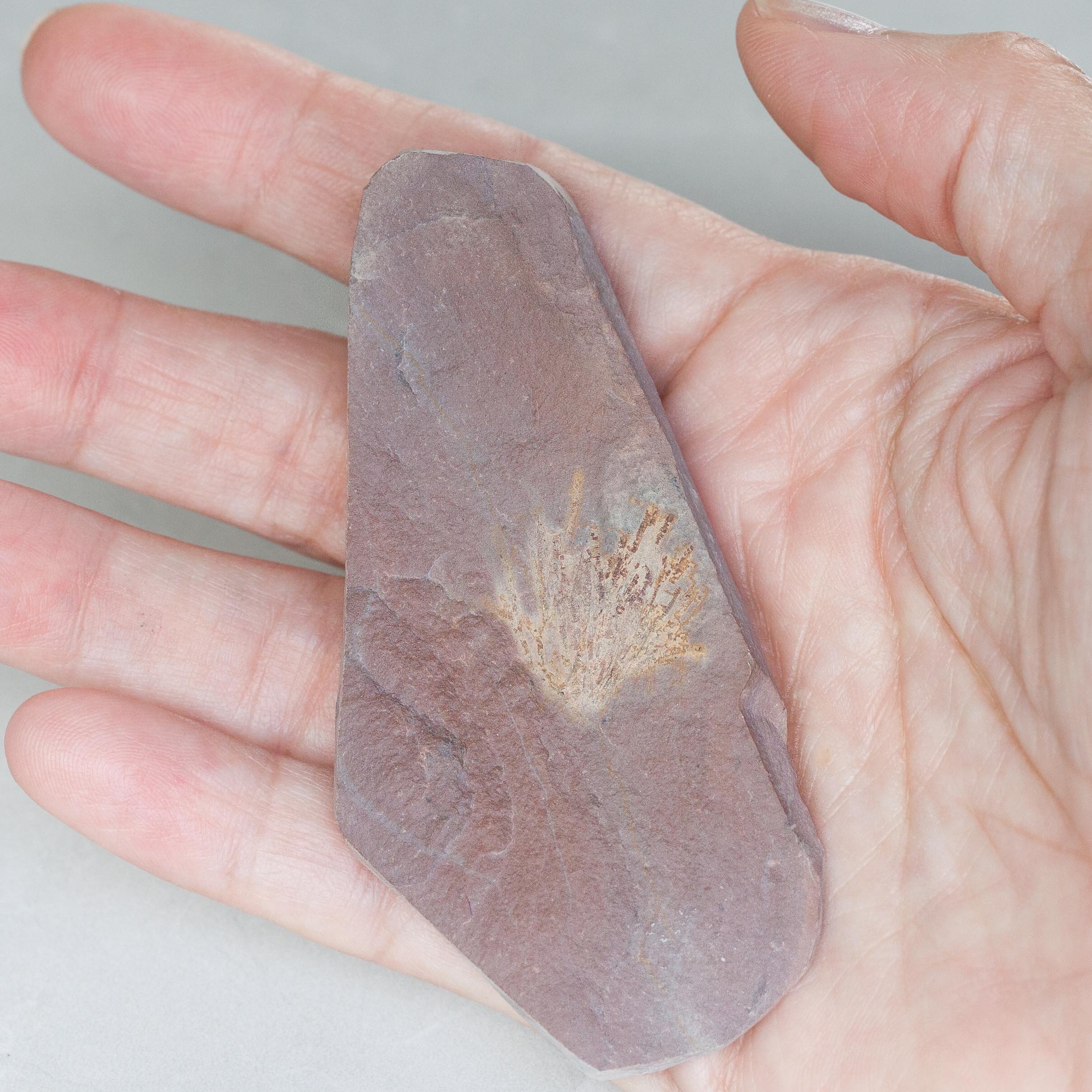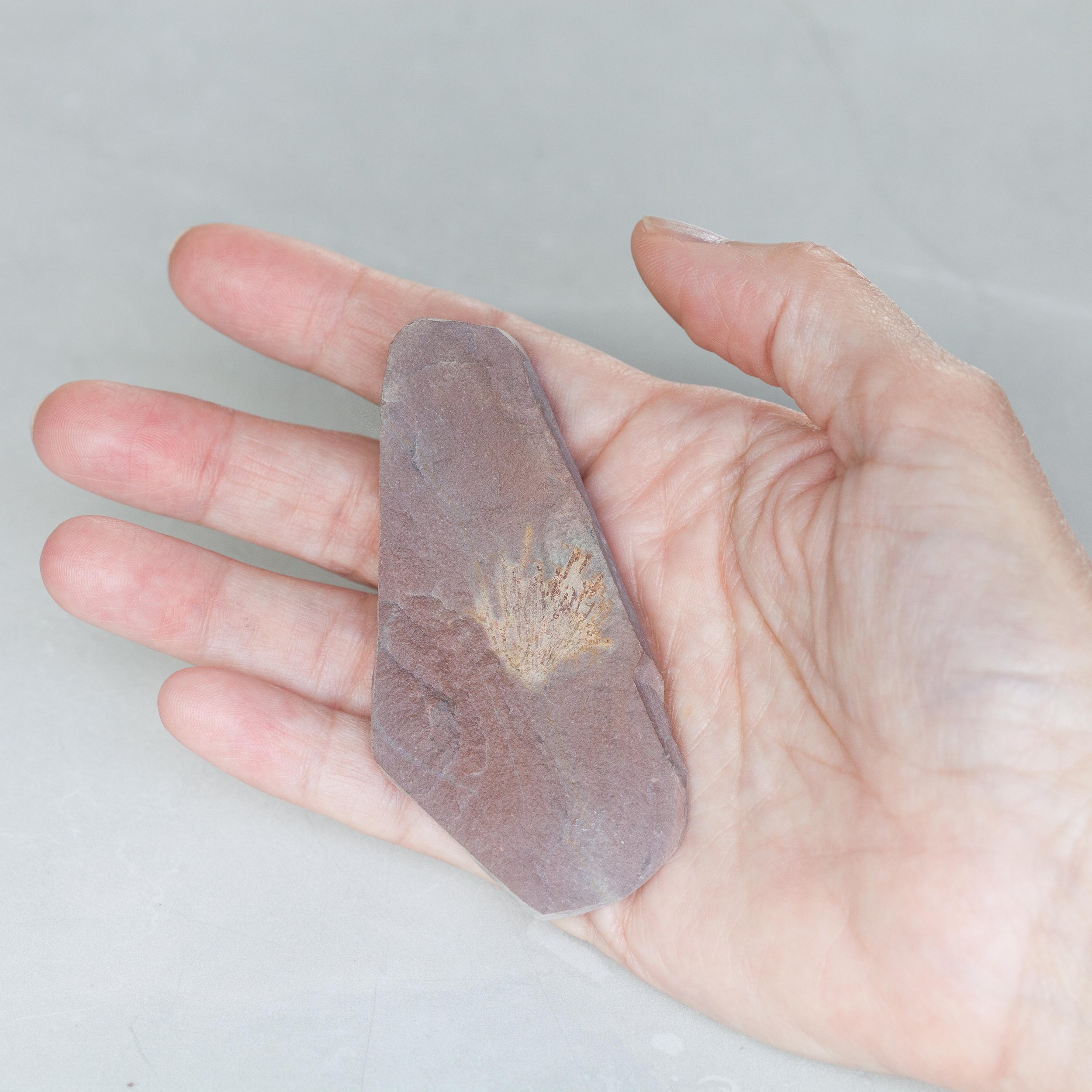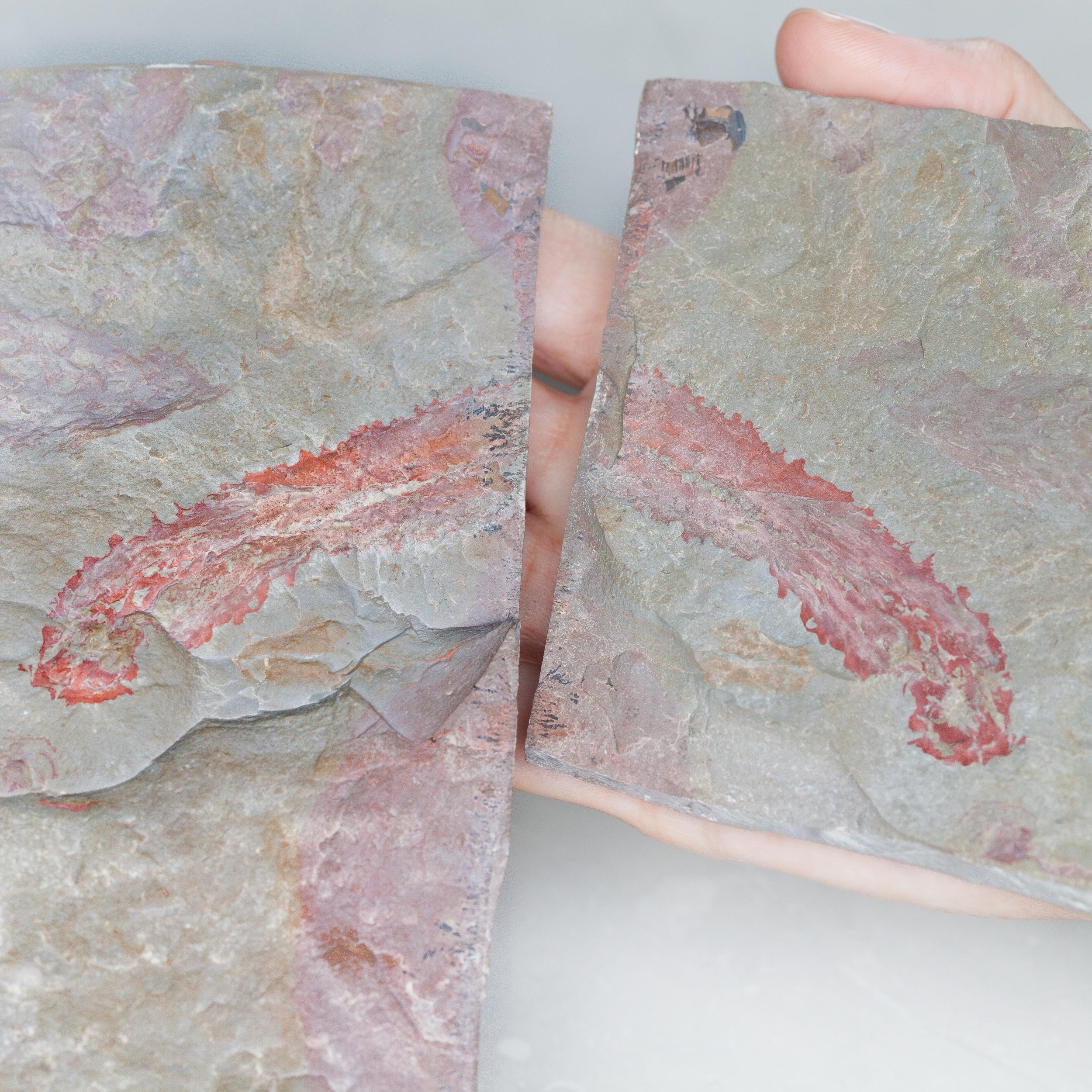Margaretia sp.
Vendor: Gold Bugs
SKU Number: SQ8145648
A vivid red, stunning and very large example of Margaretia, a green algae frond from the “Red Beds” of the Middle Cambrian rocks of Utah. This species is famously known from examples found at the Burgess Shale site but the preservation and size of these specimens from the Wheeler Shale of Utah is exceptional. The frilled and spiked edges of the frond are incredibly preserved.
Interestingly, Margaretia is considered by some to be the construct of a tube building worm. This plate features the terminal end of this Margaretia to the left with what appears to be a small worm-like fossil to the left of the opening. The worm appears to resemble Selkirkia but is unclear.
Margaretia is a hemichordate. Hemichordates appear in the Lower or Middle Cambrian and include two main classes: Enteropneusta (acorn worms - detritus feeders, eating sand or mud and extracting organic detritus), and Pterobranchia (small colonial worm-like filter-feeders).
Full dimensions are listed below.
Vendor: Gold Bugs
SKU Number: SQ8145648
A vivid red, stunning and very large example of Margaretia, a green algae frond from the “Red Beds” of the Middle Cambrian rocks of Utah. This species is famously known from examples found at the Burgess Shale site but the preservation and size of these specimens from the Wheeler Shale of Utah is exceptional. The frilled and spiked edges of the frond are incredibly preserved.
Interestingly, Margaretia is considered by some to be the construct of a tube building worm. This plate features the terminal end of this Margaretia to the left with what appears to be a small worm-like fossil to the left of the opening. The worm appears to resemble Selkirkia but is unclear.
Margaretia is a hemichordate. Hemichordates appear in the Lower or Middle Cambrian and include two main classes: Enteropneusta (acorn worms - detritus feeders, eating sand or mud and extracting organic detritus), and Pterobranchia (small colonial worm-like filter-feeders).
Full dimensions are listed below.
Vendor: Gold Bugs
SKU Number: SQ8145648
A vivid red, stunning and very large example of Margaretia, a green algae frond from the “Red Beds” of the Middle Cambrian rocks of Utah. This species is famously known from examples found at the Burgess Shale site but the preservation and size of these specimens from the Wheeler Shale of Utah is exceptional. The frilled and spiked edges of the frond are incredibly preserved.
Interestingly, Margaretia is considered by some to be the construct of a tube building worm. This plate features the terminal end of this Margaretia to the left with what appears to be a small worm-like fossil to the left of the opening. The worm appears to resemble Selkirkia but is unclear.
Margaretia is a hemichordate. Hemichordates appear in the Lower or Middle Cambrian and include two main classes: Enteropneusta (acorn worms - detritus feeders, eating sand or mud and extracting organic detritus), and Pterobranchia (small colonial worm-like filter-feeders).
Full dimensions are listed below.
Additional Information
Margaretia is a Burgess Shale fauna from the Cambrian Period that is also found in the Wheeler Shale Lagerstätte of Utah.
Margaretia belongs to the the class: Enteropneusta, these are acorn worms, detritus feeders eating sand or mud and extracting organic detritus.
They live in U-shaped burrows on the sea-bed, from the shoreline down to a depth of 10,000 ft. (3,050 m). The worms lie there with the proboscis sticking out of one opening in the burrow. Acorn worms are generally slow burrowers. To obtain food, many acorn worms swallow sand or mud that contains organic matter and microorganisms in the manner of earthworms (this is known as deposit feeding). At low tide, they stick out their rear ends at the surface and excrete coils of processed sediments (casts). Another method that some acorn worms use to obtain food is to collect suspended particles of organic matter and microbes from the water. This is known as suspension feeding.









